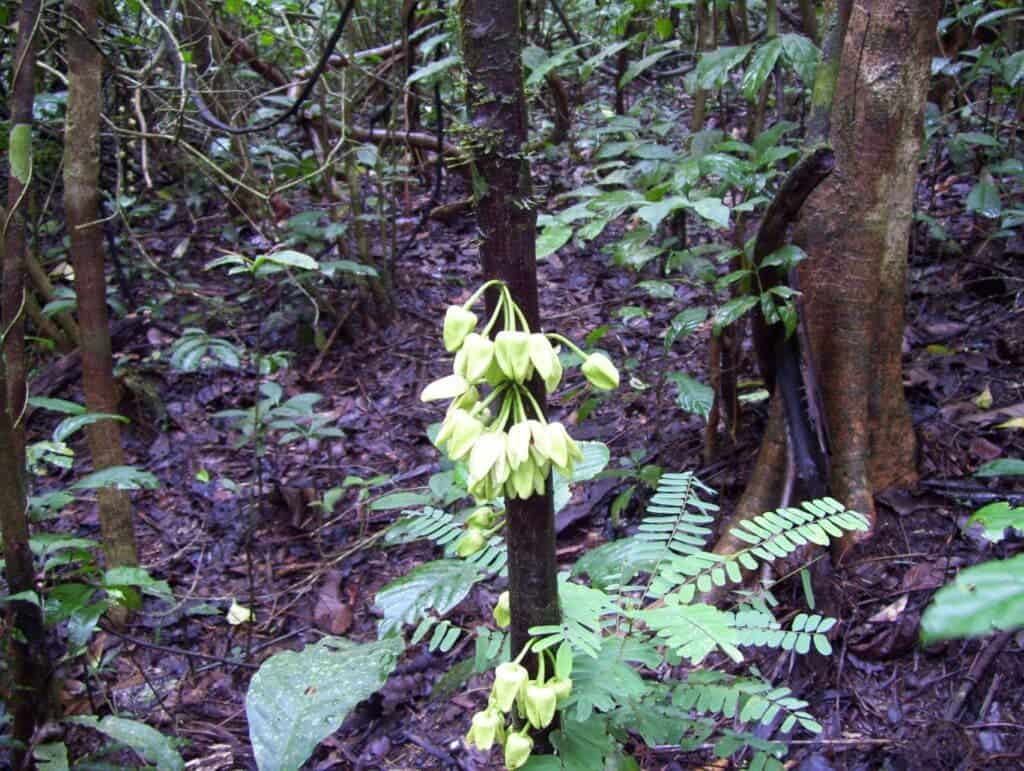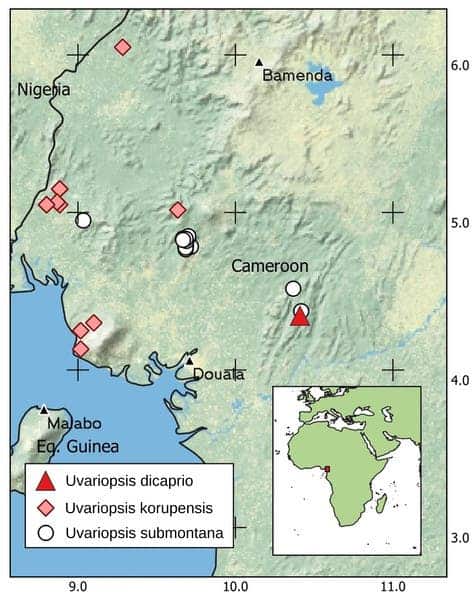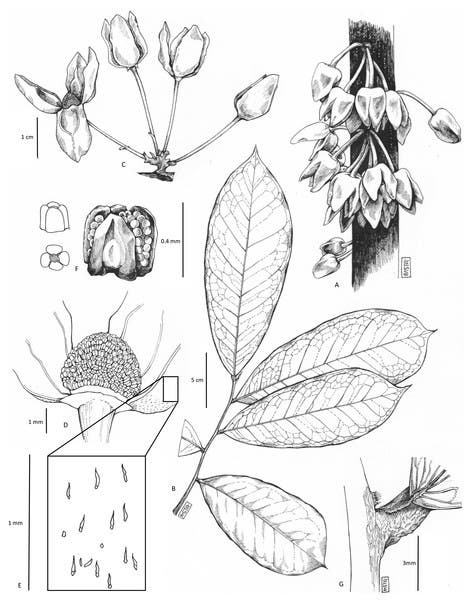
Scientists at the Royal Botanic Gardens in London discovered a tropical tree from Cameron and named it Uvariopsis dicaprio, honoring Leonardo DiCaprio for his environmental work, especially his help in saving the rainforest where the tree was found. It’s the first new plant species to be named this year and it’s already considered critically endangered, with just 50 trees spotted so far.
The new tree species lives in the Ebo Forest, one of the largest untouched rainforests in Central Africa. The forest is home to indigenous communities as well as a wide array of flora and fauna, including threatened gorillas and forest elephants. But in what sounds like a classic story, the government was planning to open up the area for logging, to the dismay of conservationists.
Scientists sent a letter to the Cameroon government to express their opposition. The issue was also picked up by DiCaprio in his social media networks, with millions of followers. The actor actively campaigned to protect the forest and circulated a petition. Finally, caving into the pressure the government revoked its plans to allow logging on the forest.

DiCaprio’s role was crucial in helping to stop the logging of the forest, Martin Cheek of Kew, one of the researchers behind the tree’s discovery, told the BBC. The actor has been on the headlines recently due to his role as Dr. Randall Mindy in the movie “Don’t Look Up,” which questions the lack of action against the climate crisis, but this is not the first time DiCaprio has taken an environmental stance.
Back in 1998, DiCaprio created the Leonardo DiCaprio Foundation, supporting organizations and projects to secure a sustainable future. The actor has produced several media projects to communicate the urgency of the crisis, including the web films Water Planet and Global Warming and the documentary the 11th hour from 2007.
A new plant species
Cheek and his colleagues from the University of Yaoundé I in Cameroon and the National Herbarium of Cameroon analyzed photos and specimens of the tree and determined that it was previously unknown to science and to local communities. The tree is “spectacular” and “just jumps out at you,” according to Cheek’s description.

Uvariopsis dicaprio is about for meters tall and its most remarkable feature are its yellow-green flowers, which can be found on its trunk. The researchers believe it’s related to the ylang-ylang tree (Cananga odorata) from Indonesia and Australia. It’s so far only known from lower submontane forest, with about 50 individuals so far observed.
“With only one locality known, Uvariopsis dicaprio represents another narrowly endemic Cameroonian species threatened with extinction due to deforestation for oil palm plantations, small-scale agriculture, mining and logging, widespread threats posing extinction risks to plant species in Cameroon,” the researchers wrote in their paper.
Every year, many plant species are named by scientists, and 2021 wasn’t the exception. In March, for example, 14 new species of blue-berried shrubs from the genus Chassallia were named. Out of the 14, one was called Northiana after the renowned artist Marianne North, who portrayted a shrub in an oil painting from 1876.
Also in August, researchers from the Royal Botanic Gardens identified and named seven new species of wild tobacco (Nicotiana), which can be found in Australia. Perhaps the most peculiar species is the Insecticida, covered in gluey hairs that can trap and kill small insects – the first recorded wild tobacco plant capable to do this.









